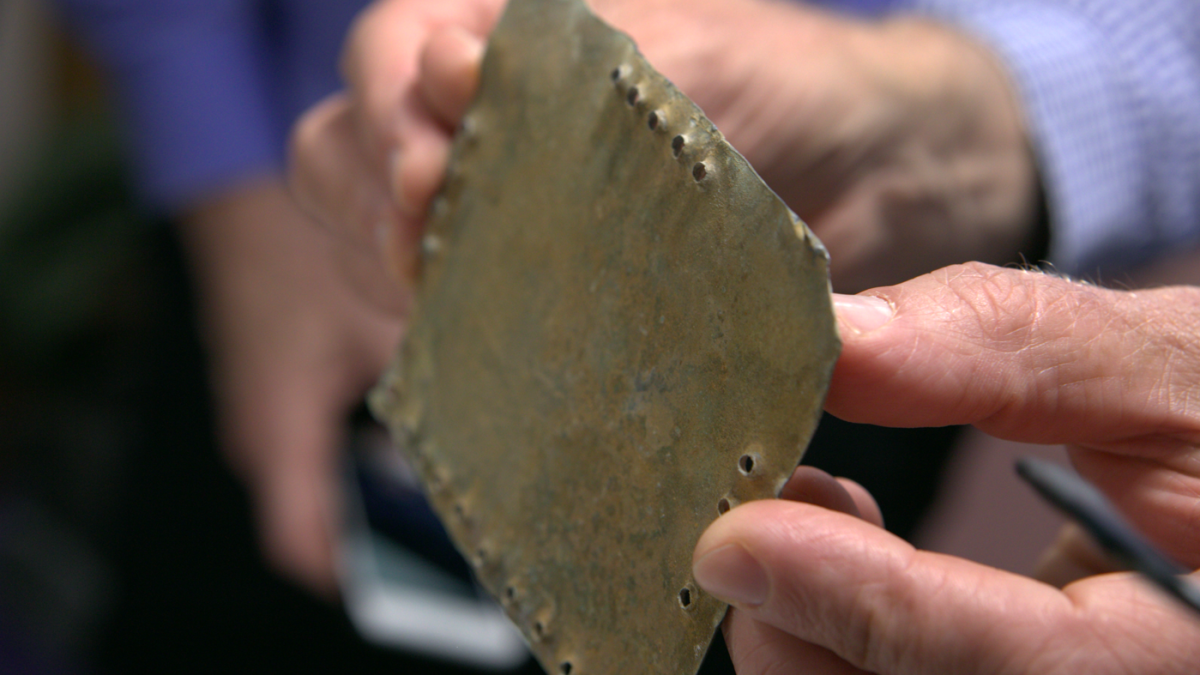Advanced ion-beam analysis reveals age variations in disputed Jordan codices
Scientists have delivered the most detailed assessment yet of a set of disputed lead books known as the Jordan codices. With debate centred on whether they could date back to the early Christian period, a study led by the University of Surrey’s Ion Beam Centre has now shed new light on their origin.

The study, published in Elsevier’s Nuclear Instruments and Methods in Physics Research B: Beam Interactions with Materials and Atoms, finds that while some of the external pages of one of the books have been found to be contaminated by interactions with the environment, giving ambiguous age determination, inside pages are less contaminated and give clear scientific readings showing they are at least 200 years old, and possibly older.
Working in collaboration with the University of Glasgow, the Scottish Universities Environmental Research Centre and the University of Vienna, researchers applied four analytical techniques to samples from the books. These included trace-element analysis, lead-isotope measurements, alpha-particle tests and radiogenic helium analysis to assess the composition and likely age of the lead. No single method could determine a definitive age, but together they provide a more detailed picture of how different parts of the codices were made.
Tests run to date do not allow for a definitive date older than 200 years, but do not rule out that possibility, opening the door to further analysis with even more accurate future testing. Although the study could not determine that the codices were created in the early Christian period, it was also not possible to show that they were of modern origin. However, a truly definitive test to determine the true age of the manufacture of the books requires further investigation due to substantial non-uniformity of the samples and a much higher degree of background contamination than was expected.

The Surrey Ion Beam Centre is the lead site for the UK National Ion Beam Centre and is equipped with state-of-the-art ion implanters and analysis facilities used across disciplines ranging from quantum technologies to materials science and biosciences.
As part of its mission, the centre also applies ion-beam techniques to cultural heritage and art conservation, including studies of timbers from the Cutty Sark and analyses used to assess whether a ‘Leonardoesque’ painting could be attributed to Leonardo Da Vinci. These capabilities allow researchers to investigate materials at microscopic and atomic scales, providing the precision needed for studies such as this.
The study was funded by the European Union’s Horizon 2020 research and innovation programme and by the EPSRC National Research Facility. As the results point to the need for deeper analysis, the research team is now looking to secure further investment and collaboration for the next phase of testing.
###
Notes to editors
- Professor Roger Webb is available for interview; please contact mediarelations@surrey.ac.uk to arrange.
- The findings from the paper will be formally launched at an event in the House of Commons at 10:30am on 21 November, hosted by Brian Mathew MP, and with Professor Webb appearing as the keynote scientific speaker. For more information and to request an invitation, please contact Lara Alexander, Executive Officer, from the Numen Society, the event’s organisers, on: media@numensociety.org / 07759 835 783
- The full paper can be found here: https://www.sciencedirect.com/science/article/pii/S0168583X25003374
- Images are available upon request
Media Contacts
External Communications and PR team
Phone: +44 (0)1483 684380 / 688914 / 684378
Email: mediarelations@surrey.ac.uk
Out of hours: +44 (0)7773 479911
